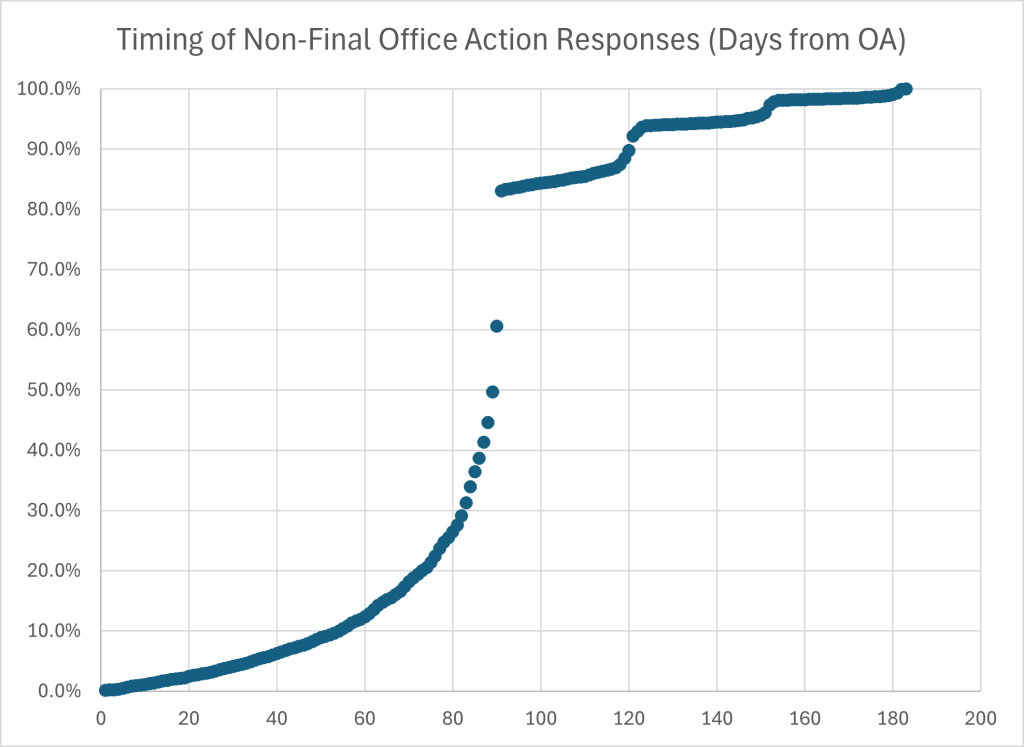by Dennis Crouch
I have a cute chart below - a cumulative frequency diagram showing how long patent applicants take to respond to non-final office actions.
To continue reading, become a Patently-O member. Already a member? Simply log in to access the full post.
